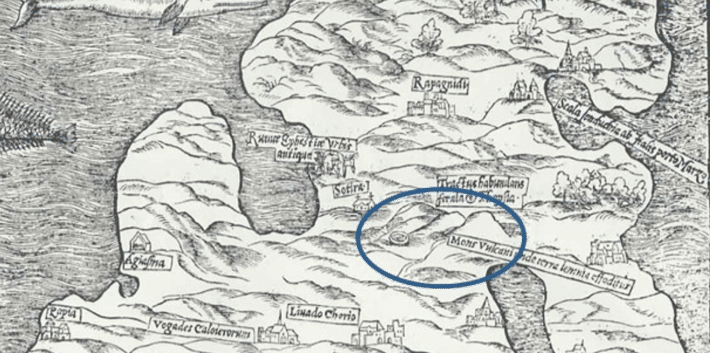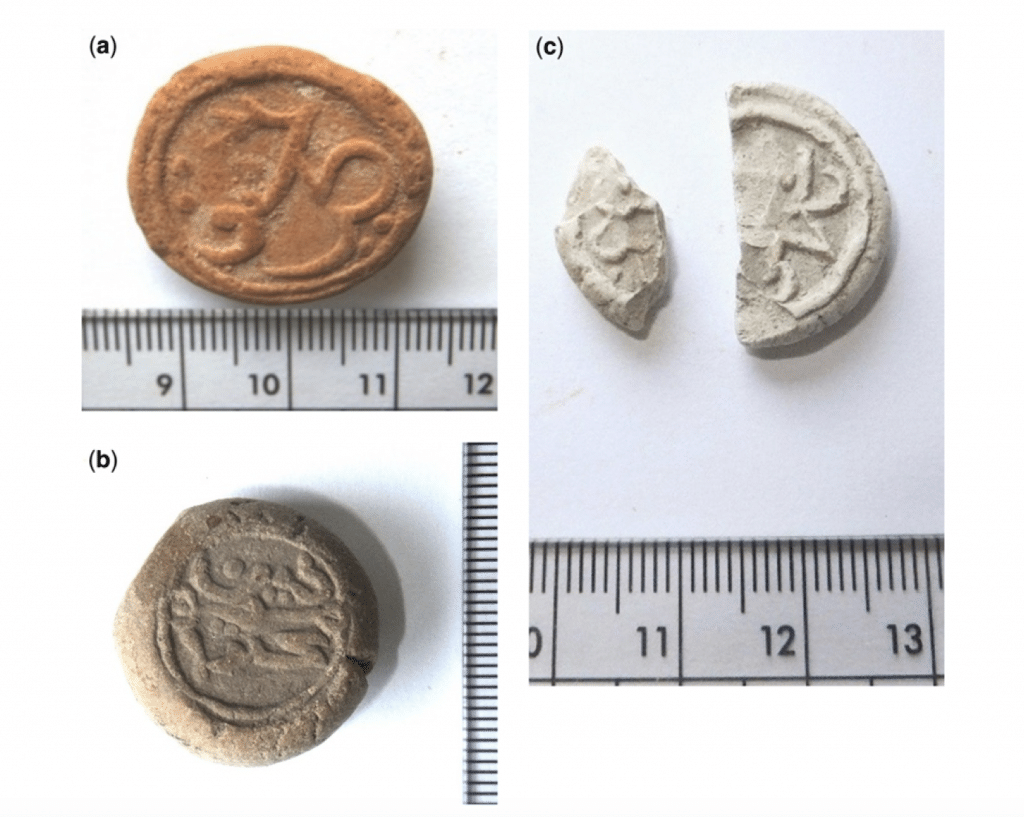Lemnian Earth
Lemnian Earth (LE) (terra sigillata, stamped earth, sphragis) was a highly prized therapeutic stamp-bearing clay, in the form of a pellet, from Lemnos Island, North Aegean, Greece, with a documented record of near-continuous use, spanning 2500 years. Its extraction, at a particular location on the northern shore of the island and subsequent ‘washing’ and preparation in the shape of a stamped pellet, at a nearby temple (in antiquity) or under the ‘blessing’ of the Church (in later times) was steeped in well-documented rituals. Its distribution, both in antiquity and in the post-medieval and later periods, was tightly controlled.
A close look at the medical literature (from 5th c BCE to the late 19th c CE) reveals that it was prescribed for several ailments including “bringing up blood” and ‘hemoptysis’ (“spitting of blood”); as an ‘antidote’ to poison ingested or venoms injected; as a preventative ‘against the plague’; and as a treatment for bowel issues. Nevertheless, and despite its long-held and highly prized reputation, it has not been possible to explain what made LE, a seemingly ordinary clay, a therapeutic one.
Our investigation into historical samples (16th-18th c) of Lemnian sphragides (stamped earth tablets) in the Pharmacy Museum of the University of Basel showed strong activity against both Staphylococcus aureus and Pseudomonas aeruginosa. Interestingly, geological samples of clays from the locality of extraction of Lemnian Earth did not exhibit the same effect, suggesting that it may have been the method of preparation which was responsible for the introduction of bioactive compounds, previously not present in the natural clays.


References
Photos-Jones, E. (2023) Pigments giving more than colour: the case of Lemnian earth or miltos. Technai: An International Journal for Ancient Science and Technology, 14, pp. 123-136. (doi: 10.19272/202310501006)
Christidis, G. E., Knapp, C. W., Venieri, D., Gounaki, I., Elgy, C., Valsami-Jones, E. and Photos-Jones, E. (2020) The interweaving roles of mineral and microbiome in shaping the antibacterial activity of archaeological medicinal clays. Journal of Ethnopharmacology, 260, 112894. (doi: 10.1016/j.jep.2020.112894) (PMID:32348844)
Venieri, D., Gounaki, I., Christidis, G. E., Knapp, C. W., Bouras-Vallianatos, P. and Photos-Jones, E. (2020) Bridging the gaps: bole and Terra Sigillata as artefacts, as simples and as antibacterial clays. Minerals, 10(4), e348. (doi: 10.3390/min10040348) (PMID:32724664) (PMCID:PMC7115821)
Photos-Jones, E. , Edwards, C., Häner, F., Lawton, L., Keane, C., Leanord, A. and Perdikatsis, V. (2017) Archaeological medicinal earths as antibacterial agents: the case of the Basel Lemnian sphragides. Geological Society, London, Special Publications, 452(1), pp. 141-153. (doi: 10.1144/SP452.6)
Hall, A. and Photos-Jones, E. (2008) Accessing past beliefs and practices: the case of Lemnian Earth. Archaeometry, 50(6), pp. 1034-1049. (doi: 10.1111/j.1475-4754.2007.00377.x)